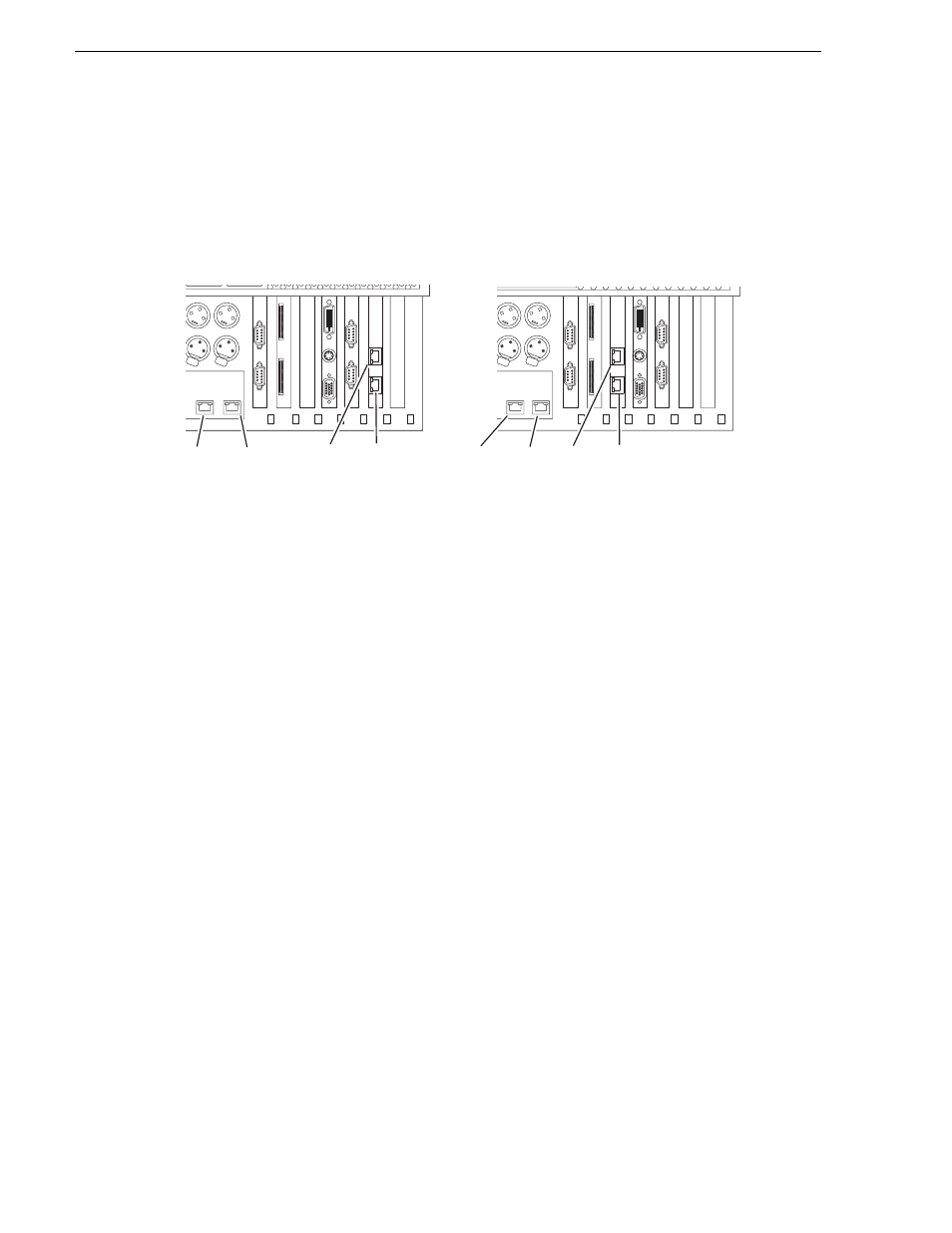About ethernet ports and teaming, Connecting the ethernet network cabling, Chapter 3 system connections and configuration – Grass Valley K2 Media Client System Guide Oct.10 2006 User Manual
Page 48

48
K2 Media Client System Guide
September 7, 2006
Chapter 3 System connections and configuration
About Ethernet ports and teaming
The K2 Media Client has four Gigabit Ethernet ports: two on the motherboard and two
on the Network Interface Card. The location of the ports is different for the SD and
the HD/SD K2 Media Clients.
On internal storage models, the four ports are independent ports, each with the same
configuration. Ports are not teamed at the factory. However, if you chose to team ports
to provide redundancy, do so only as instructed in
“Teaming Ethernet ports on internal
On external storage models, the first port on the motherboard (Port 1) and the first port
on the Gigabit Ethernet card (Port 3) are configured at the factory as a teamed pair.
This is the Control Team. The teamed pair appears to the network as a single adapter
with one IP address. Do not modify this teaming configuration. If you need to reset
teaming to factory specifications, refer to the K2 Media Client Service Manual.
On external storage models, the second port on the motherboard (port 2) and the
second port on the Gigabit Ethernet card (port 4) are left as independent ports
(unteamed). These are the media ports, used for iSCSI traffic only. Refer to
External Storage and to the K2 Storage System Instruction Manual for more
information about the media ports.
Connecting the Ethernet network cabling
This section is divided into two parts:
“Connecting the network cabling for K2 Media Clients with internal storage” on
page 48
“Connecting the network cabling for K2 Media Clients with external (shared)
storage” on page 49
Connecting the network cabling for K2 Media Clients with internal storage
On a K2 Media Client with internal storage, port 1 is the control port, used to transmit
command information, AMP protocols, etc. Connect the control network to port 1.
Port 2 is used for FTP/streaming transfers. Connect the FTP/streaming network to
port 2. Refer to
“Using FTP for file transfer” on page 68
for more information about
the FTP/streaming network.
Port 1
Onboard ports
NIC ports
Port 4
Port 3
Port 2
Pu
sh
Pu
sh
UNUSED
UNUSED
Pu
sh
Pu
sh
UNUSED
UNUSED
HD model GigE network connections
SD model GigE network connections
Port 1
Onboard ports
NIC ports
Port 4
Port 3
Port 2
